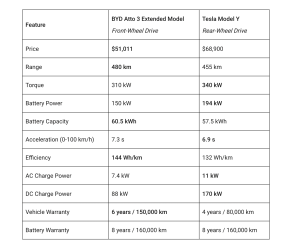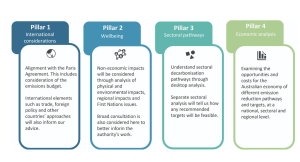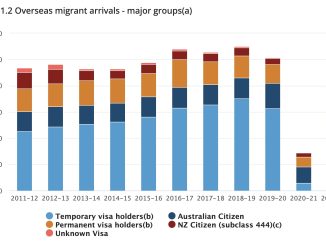Introduction:
Australia’s electric vehicle (EV) market is entering a new era as Chinese automakers, known for producing affordable, technologically advanced “Tesla killers,” (SMH, 2025) increase their presence in the country. These brands, including BYD and NIO, bring cutting-edge artificial intelligence (AI), innovative battery technologies, and competitive pricing, shaking up the traditional dominance of Tesla and other established manufacturers. And it’s out of expectation that Chinese company BYD is set to unseat Tesla as the world’s number one EV seller later this year(ABC news,2025). This shift represents a critical moment in Australia’s journey toward sustainability, aligning with national targets to reduce carbon emissions. At the same time, it raises broader questions about consumer trust, economic impacts, and the readiness of Australia’s EV infrastructure.
A New Wave of Competition:
Chinese EV makers have seen explosive growth globally, exporting over 500,000 electric vehicles in 2024 alone. With models like BYD’s Atto 3, Geely EX5 entering Australian showrooms in 2025, these companies are providing accessible options for middle-income families, and there’s fierce competition between BYD Atto 3 and Tesla Model Y. When you consider that the BYD Atto 3 is considerably cheaper than the Tesla Model Y, this is a great result for the Chinese-made electric vehicle. Meanwhile, the availability of affordable electric cars has contributed to a significant increase in EV market share in Australia.

The Consumer Perspective:
As more Chinese EVs hit Australian roads, consumers are becoming more familiar and comfortable with these brands (Farmonaut, 2025). Dealers report a surge in interest, particularly from younger buyers. However, industry experts note that many Australians remain skeptical of Chinese manufacturers, citing concerns about reliability and long-term support. large parts of our community seem to have issues with our largest two-way trading partner(Corby, 2025). These perspectives will be further explored with interviews from both consumers and dealerships.
Economic and Environmental Impacts:
The expansion of Chinese EV brands plays a dual role in Australia’s future. Economically, the influx of affordable EVs fosters competition, potentially lowering prices across the board. However, this raises questions about over-reliance on Chinese imports and its effects on local automotive industries.
Environmentally, increased EV adoption aligns with Australia’s commitment to reducing carbon emissions. Yet, critics argue that the country’s fossil fuel-dependent energy grid limits the environmental benefits of EVs. Advocates emphasize that this shift must be coupled with a transition to renewable energy.

Conclusion :
There’s a fierce competition between Tesla and an Chinese EV brands, and all of those Chinese EV launch will reshaping Australia’s EV market, offering consumers more choices while challenging traditional loyalties. Their rise brings promise and tension, symbolizing larger societal changes in technology, trade, and sustainability. By examining consumer stories, industry insights, and environmental challenges, this feature will provide a comprehensive picture of a rapidly evolving industry.
Through a narrative-driven, research-backed approach, this feature will engage readers and encourage thoughtful dialogue about the implications of the automobile electric revolution in Australia.
Interviewees:
Industry Experts: Analysts specializing in EV trends and market growth.
EV Owners: Personal accounts of buying and using Chinese EVs in Australia.
Dealership Representatives: Perspectives on navigating consumer hesitance.




Be the first to comment